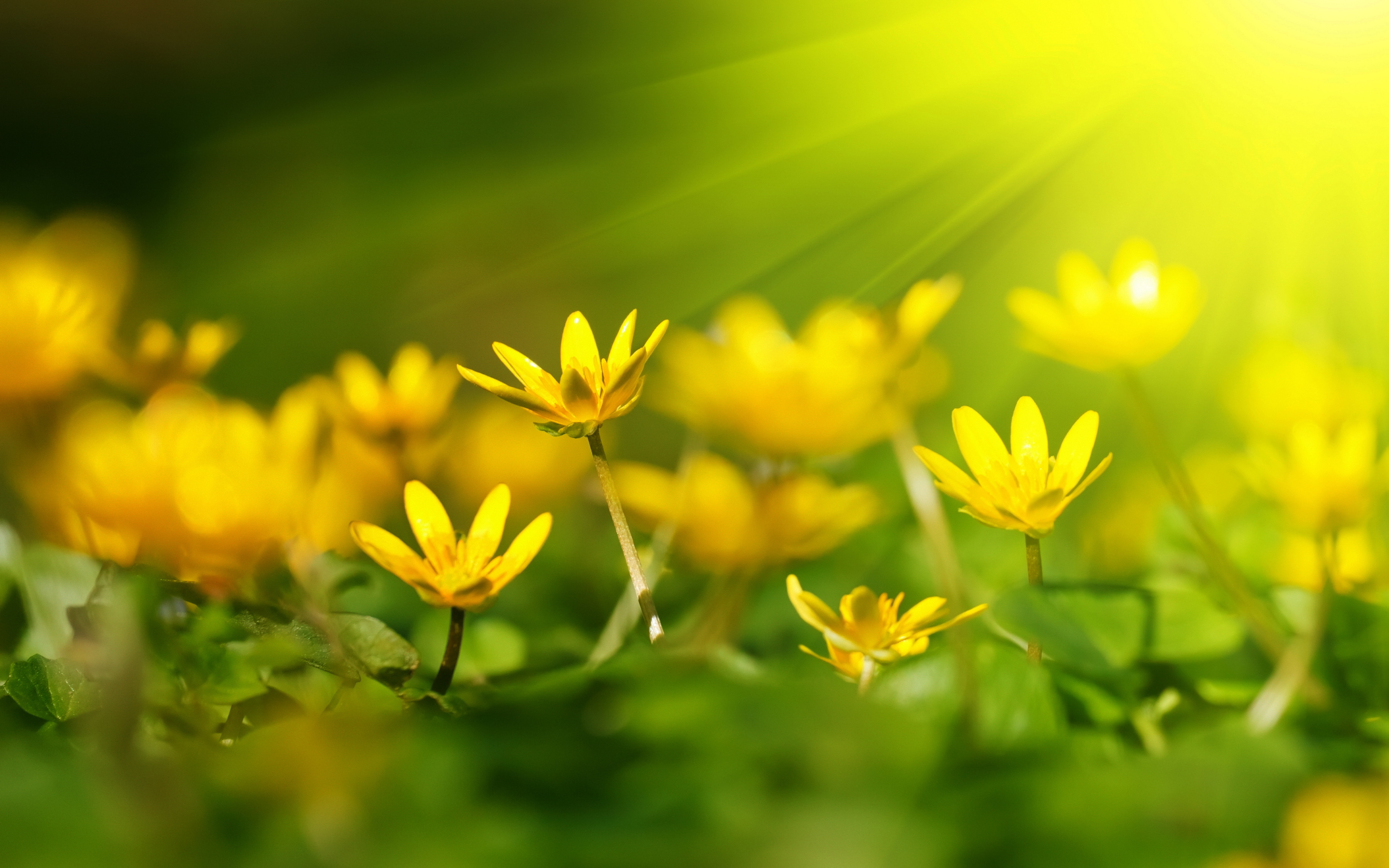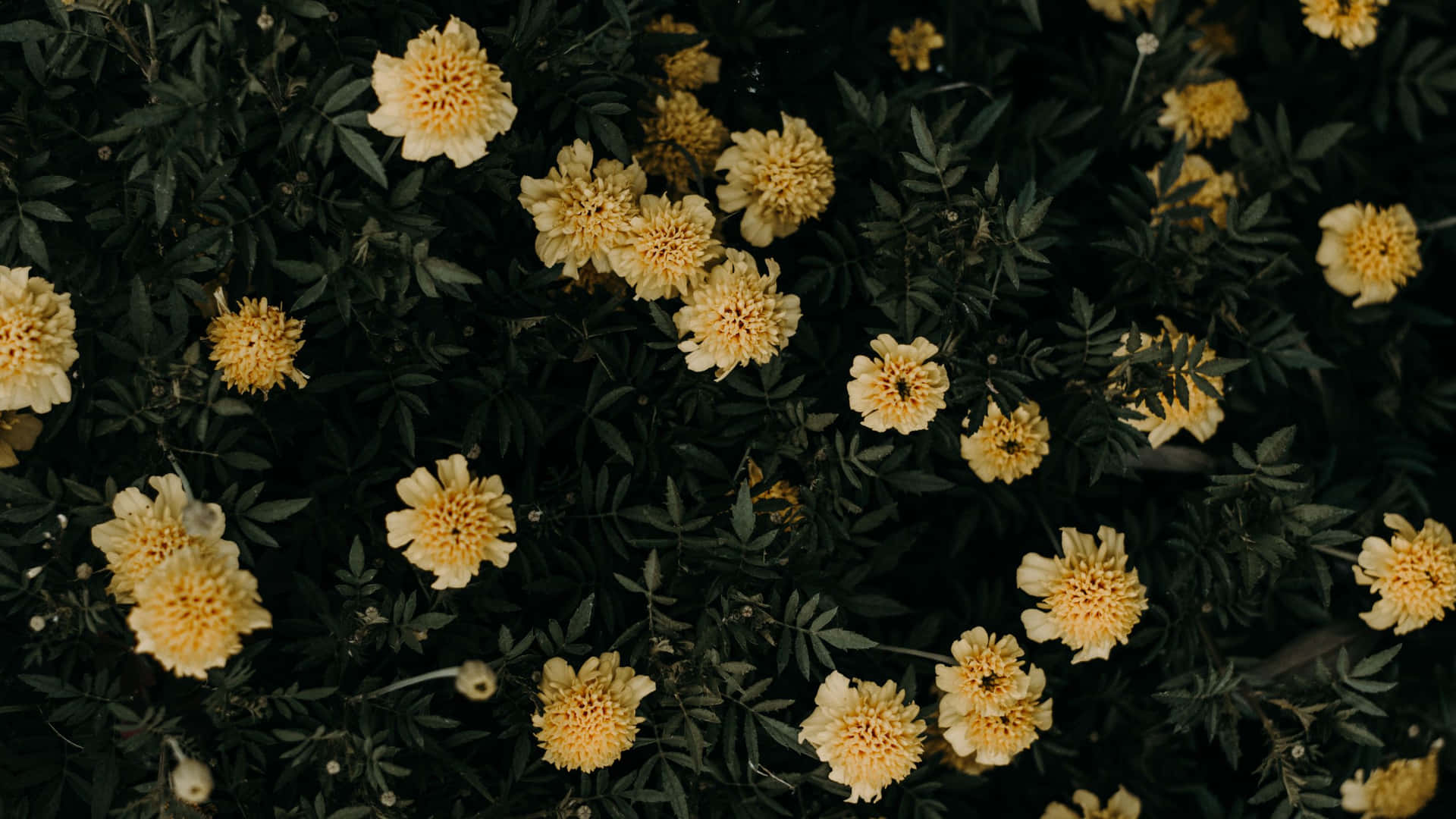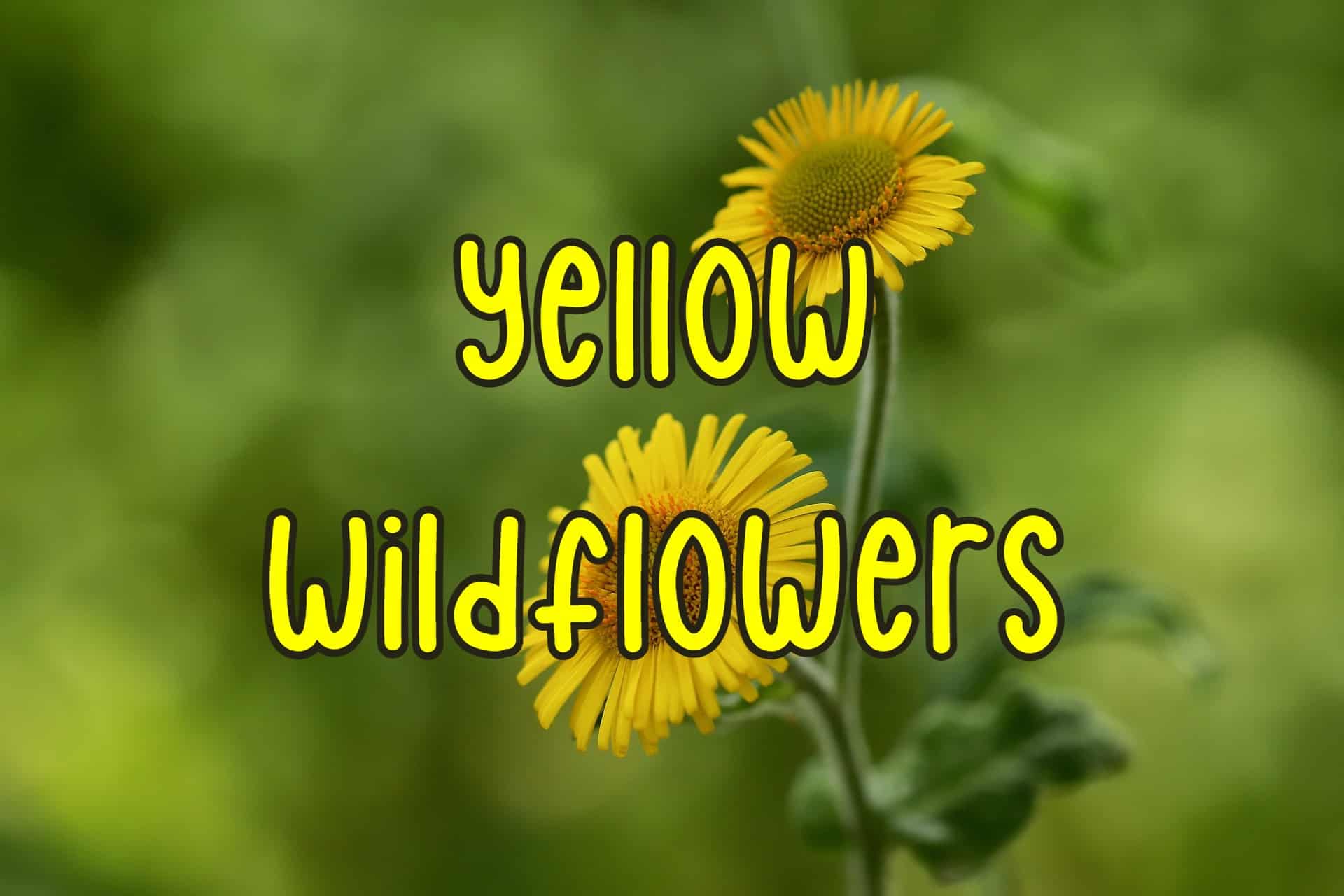The Radiant Realm of Yellow Flowers: A Journey Through Sunshine and Symbolism

Yellow flowers, a vibrant burst of sunshine captured in delicate petals, hold a special place in the botanical world and human culture. From the cheerful daffodil heralding spring to the majestic sunflower reaching for the sky, yellow blooms evoke feelings of joy, optimism, and warmth. This article delves into the fascinating world of yellow flowers, exploring their diverse varieties, symbolic meanings, practical applications, and the reasons behind their captivating allure.
A Spectrum of Yellow: Unveiling the Diversity
The range of yellow flowers is as vast and varied as the landscapes they adorn. The shade itself can range from the palest lemon to the deepest gold, offering a captivating spectrum of hues. Here are just a few notable examples:
Sunflowers (Helianthus annuus): Perhaps the most iconic yellow flower, the sunflower stands tall, its large, daisy-like head following the sun’s path throughout the day. They symbolize adoration, longevity, and unwavering faith.
Daffodils (Narcissus): These trumpet-shaped flowers are quintessential symbols of spring, representing rebirth, new beginnings, and hope. Their bright yellow color signals the end of winter’s gloom.
Roses (Rosa): While often associated with red, yellow roses have their own unique charm. They traditionally symbolize friendship, caring, and joy, making them perfect gifts for platonic relationships.
Tulips (Tulipa): These cup-shaped flowers come in a rainbow of colors, including various shades of yellow. Yellow tulips often represent cheerful thoughts, sunshine, and perfect love.

Buttercups (Ranunculus): These small, glossy flowers are often found in meadows and fields. Their name aptly describes their rich, buttery yellow color. They symbolize charm, humility, and childishness.

Marigolds (Tagetes): These vibrant, daisy-like flowers are known for their strong scent and insect-repelling properties. They symbolize grief, jealousy, and remembrance, often used in Day of the Dead celebrations.
Daisies (Bellis perennis): While often associated with white petals, some daisy varieties boast bright yellow centers or even entirely yellow blooms. They symbolize innocence, purity, and new beginnings.
Forsythia (Forsythia): These shrubs burst into a profusion of bright yellow flowers in early spring, announcing the arrival of warmer weather. They symbolize anticipation and good fortune.
Goldenrod (Solidago): Often mistaken for ragweed (a common allergen), goldenrod boasts tall stalks covered in clusters of tiny yellow flowers. They symbolize encouragement, good fortune, and wealth.
Yarrow (Achillea millefolium): This herbaceous plant features clusters of small, densely packed yellow flowers. It has a long history of medicinal use and symbolizes healing and courage.

This list is just a glimpse into the diverse world of yellow flowers. Countless other species, including dandelions, primroses, lilies, and irises, also contribute to the radiant tapestry of yellow blooms.
The Language of Yellow: Decoding the Symbolism
Beyond their aesthetic appeal, yellow flowers carry a rich history of symbolism across cultures and throughout time. The meaning associated with yellow blooms can vary depending on the specific flower and the cultural context.
Joy and Happiness: Yellow is inherently associated with sunshine, warmth, and positivity. Yellow flowers naturally evoke feelings of joy, happiness, and optimism. They are often given to cheer someone up or to celebrate a happy occasion.
Friendship and Caring: Yellow roses, in particular, are strongly associated with friendship and caring. They are a thoughtful gift for a friend, expressing appreciation and platonic love.
New Beginnings and Hope: Like the rising sun, yellow flowers can symbolize new beginnings, hope, and optimism for the future. Daffodils, with their early spring bloom, are a prime example of this symbolism.
Adoration and Loyalty: Sunflowers, with their unwavering gaze towards the sun, symbolize adoration, loyalty, and unwavering faith. They represent a strong and devoted connection.
Wealth and Prosperity: In some cultures, yellow is associated with wealth, prosperity, and good fortune. Yellow flowers, therefore, can be seen as symbols of abundance and success.
Jealousy and Infidelity: Interestingly, in some historical contexts, yellow has also been associated with jealousy, infidelity, and betrayal. This darker symbolism is less prevalent today but is worth noting.
Understanding the historical and cultural context can help you interpret the symbolism of yellow flowers more accurately. While the general association is positive, it’s always wise to consider the specific flower and the recipient’s cultural background.
Beyond Beauty: Practical Applications of Yellow Flowers
The benefits of yellow flowers extend beyond their aesthetic appeal and symbolic meanings. They have a variety of practical applications, including:
Gardening and Landscaping: Yellow flowers add vibrancy and visual interest to gardens and landscapes. They can be used to create focal points, brighten shady areas, and attract pollinators.
Pollinator Attraction: Many yellow flowers are rich in nectar and pollen, attracting bees, butterflies, and other beneficial insects. This makes them valuable additions to pollinator gardens.
Cut Flowers and Floral Arrangements: Yellow flowers are popular choices for cut flower arrangements, adding a cheerful and uplifting touch to any space.
Dyeing and Pigments: Some yellow flowers, like marigolds, can be used to extract natural dyes for fabrics and other materials.
Medicinal Uses: Some yellow flowers, like yarrow, have a long history of medicinal use. They may possess anti-inflammatory, antiseptic, and wound-healing properties.
Culinary Uses: Some yellow flowers, like nasturtiums, are edible and can be used to add a peppery flavor and vibrant color to salads and other dishes.
Insect Repellent: Marigolds are known for their insect-repelling properties, making them useful for protecting gardens from pests.
These practical applications demonstrate the versatility and value of yellow flowers beyond their beauty.
Cultivating Sunshine: Growing Your Own Yellow Flowers
Growing your own yellow flowers can be a rewarding experience, bringing a touch of sunshine and joy to your garden. Here are a few tips for successful cultivation:
Choose the Right Flowers: Select yellow flower varieties that are suitable for your climate and growing conditions. Consider factors like sunlight exposure, soil type, and water requirements.
Prepare the Soil: Ensure the soil is well-drained and rich in nutrients. Amend the soil with compost or other organic matter to improve its fertility.
Provide Adequate Sunlight: Most yellow flowers thrive in full sun, requiring at least six hours of direct sunlight per day.
Water Regularly: Water the plants regularly, especially during dry periods. Avoid overwatering, which can lead to root rot.
Fertilize as Needed: Fertilize the plants with a balanced fertilizer to promote healthy growth and abundant blooms.
Deadhead Regularly: Remove spent flowers to encourage continued blooming.
Protect from Pests and Diseases: Monitor the plants for pests and diseases and take appropriate measures to control them.
With proper care and attention, you can enjoy a vibrant display of yellow flowers in your garden throughout the growing season.
FAQ: Frequently Asked Questions About Yellow Flowers
What does a yellow flower symbolize? Generally, yellow flowers symbolize joy, happiness, friendship, and new beginnings. However, the specific meaning can vary depending on the type of flower and the cultural context.
Are yellow flowers bad luck? While yellow has been associated with jealousy and infidelity in some historical contexts, it is generally considered a positive and cheerful color. Yellow flowers are more often associated with happiness and friendship than bad luck.
What are some popular yellow flowers? Some popular yellow flowers include sunflowers, daffodils, roses, tulips, buttercups, marigolds, and daisies.
Are all yellow flowers fragrant? No, not all yellow flowers are fragrant. Some, like sunflowers, have little to no scent, while others, like some varieties of roses, are highly fragrant.
How do I care for yellow cut flowers? To prolong the life of yellow cut flowers, trim the stems at an angle, remove any leaves that will be submerged in water, and change the water regularly.
Conclusion: The Enduring Appeal of Yellow Flowers
Yellow flowers, with their radiant color and diverse forms, hold a special place in our hearts and gardens. From the cheerful daffodil to the majestic sunflower, they evoke feelings of joy, optimism, and friendship. Their symbolic meanings, practical applications, and captivating beauty make them a treasured part of the natural world. Whether you’re seeking to brighten your garden, express your appreciation for a friend, or simply bask in the warmth of their sunshine hue, yellow flowers offer a timeless and enduring appeal. They are a constant reminder of the beauty and joy that can be found in the simplest of things, a vibrant testament to the power of nature to uplift and inspire. So, embrace the radiant realm of yellow flowers and let their sunshine illuminate your world.


